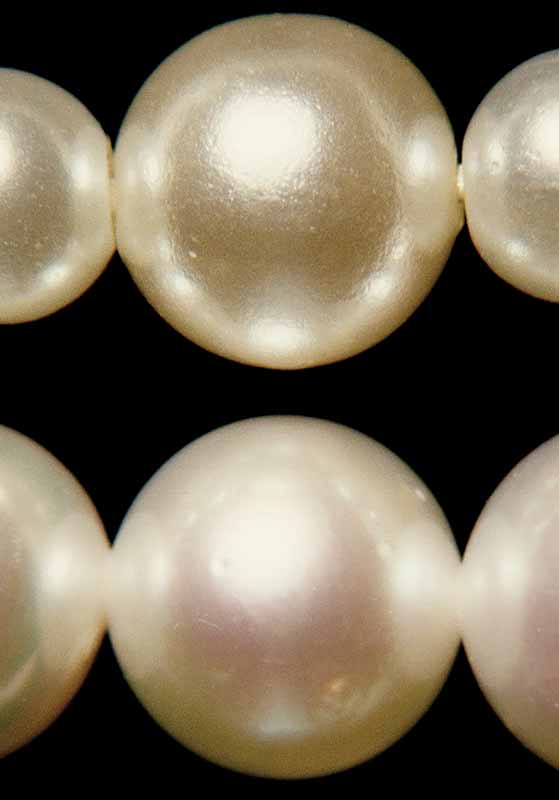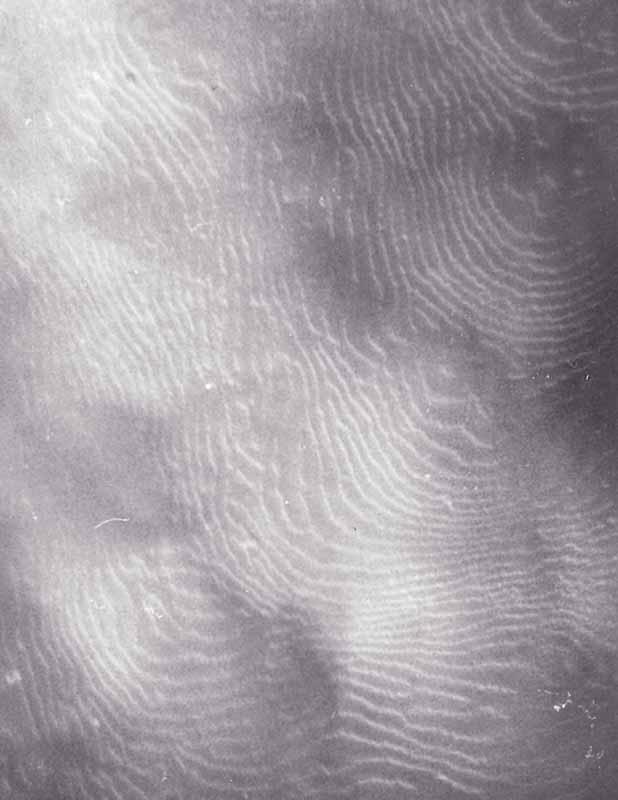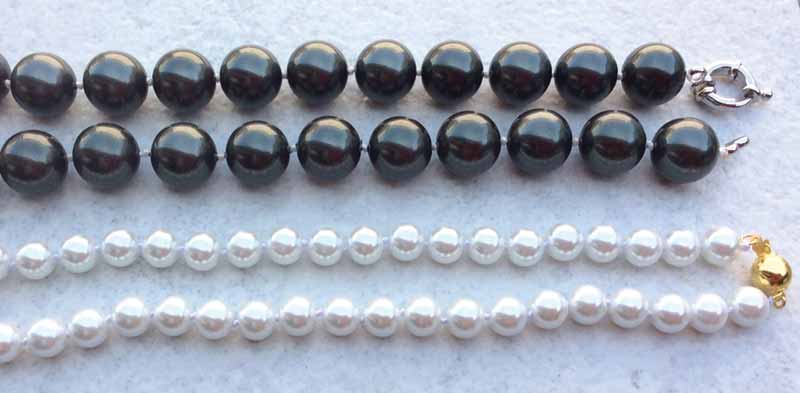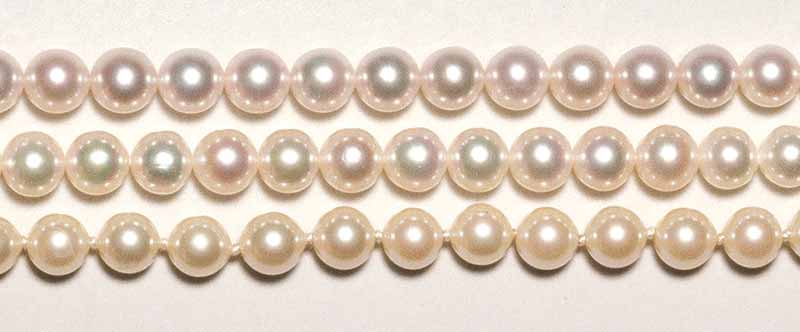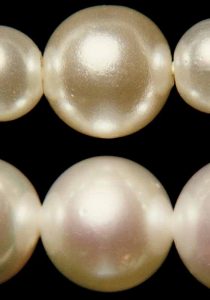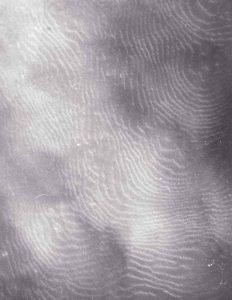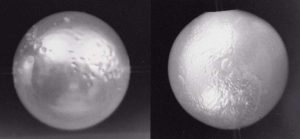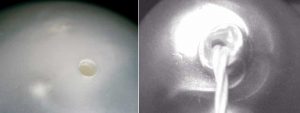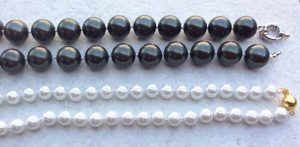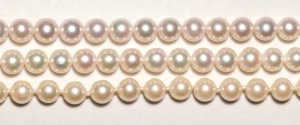Tooth test
If you rub the pearls lightly along the biting edge of your upper front teeth and they feel gritty or sandy, it is likely they are cultured or natural. This is the result of the microscopic ridges found on their surface (Figure 2). If they feel smooth, they are most likely imitations; however, occasionally real pearls are polished and may feel smooth. Additionally, a substance may be added to imitations’ coatings to make them feel gritty. Therefore, the tooth test does not always work. Magnification is a more reliable and sanitary way to detect fakes.
Blemish test
Genuine pearls often have blemishes that help distinguish them from imitations. Pits and welts like the ones in Figure 3 are very common. Jewellers should examine pearl blemishes with a 10x loupe whenever possible to learn what they look like.
Drill hole test
Drill holes also help differentiate real pearls from imitations. Cultured pearls often have a clear dividing line between the nacre and nucleus. The edges of their drill holes are usually sharp and well defined. Imitations, on the other hand, generally have a very thin coating, which may have ragged edges. Sometimes they have rounded ridges around their drill holes (Figure 4).
Heft
If you bounce a strand of pearls in your hand and it feels unusually lightweight, that’s a sign it may be made of plastic. However, it’s important to keep in mind imitations made of coated shell beads or glass may have the same heft as pearls, and some hollow cultured pearls may feel lightweight.
Perfect matching test
Coated shell beads are popular imitations because they have the same type of bead nucleus as cultured pearls, meaning they feel similar. Figure 5 shows two strands of coated shell beads. The black strand was sold as a Tahitian black South Sea shell pearl necklace and the white strand was sold as a white, AAA South Sea shell pearl necklace. Notice how the beads are perfectly matched for shape, size, and body colour. This is a good clue they are imitations. When their surface is examined with a 10x loupe, it appears grainy, which indicates they are not real pearls.
Overtone test
Good-quality real pearls have overtones that overlie the body colour. These normally vary in colour within a strand, as shown in the top two strands in Figure 6, which have pink and greenish overtones. The beads in the bottom strand do not show such variation because they are imitations. The shell beads in Figure 5 similarly lack overtones.


